Books
Books
published in 2023
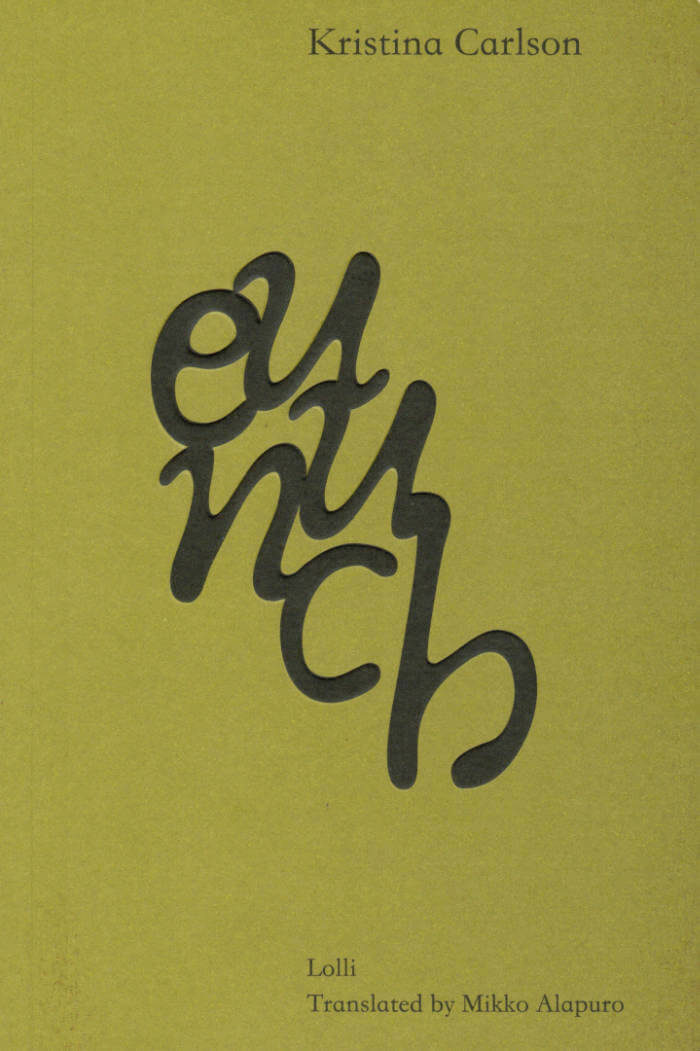
Eunuch
An ageing eunuch, named Wang Wei after the great poet, looks back on his life at the court of the Song dynasty in 12th-century China
Wang Wei has always chosen his words carefully. His unobtrusive presence has seen him through the reign of five emperors, but now, as his own time is running out, he immerses himself in an unbridled account of a life confined at court. From the early separation from his parents, sisters, and brother – who did not survive the operation into a eunuch – to the power struggles he has witnessed and endured, Wang Wei examines human relationships with precision and a catching sense of wonder. While rumours are weapons, it is love and its various forms of expression that most fascinate Wang Wei.
Reaching into a secret and secluded world, Carlson's vivid prose is as delicate as it is enigmatic. A meditation on power and exclusion, love and loneliness, gender and identity, ageing and transformation, Eunuch is a compact masterpiece.
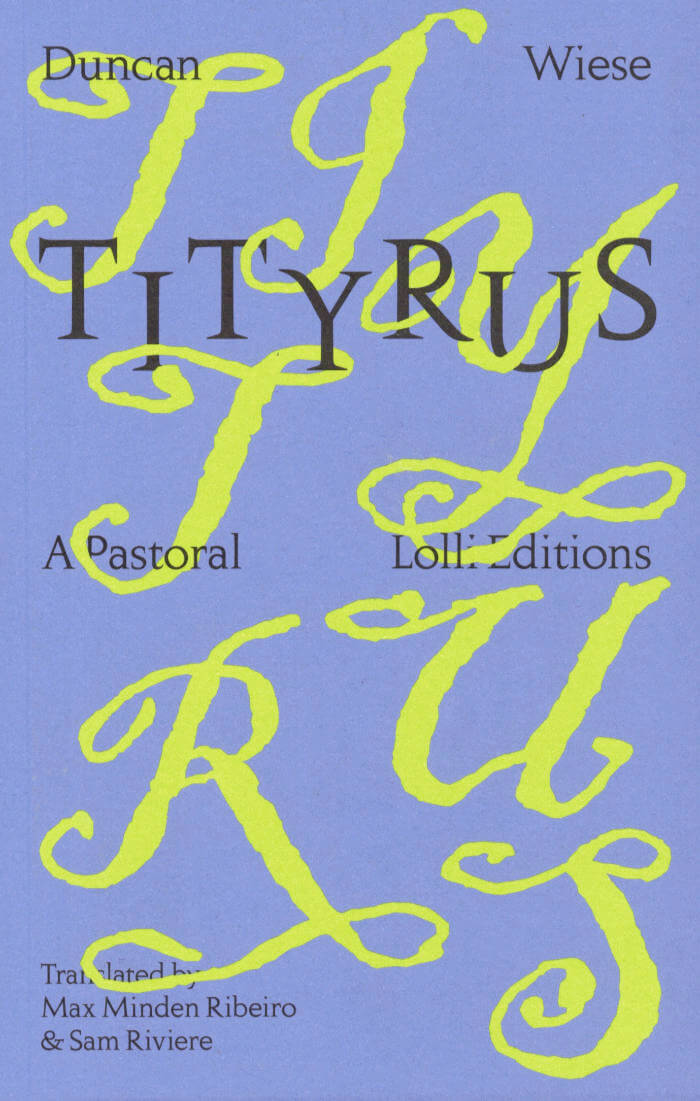
Tityrus
Duncan Wiese updates the pastoral for the 21st century. In Tityrus, the countryside offers a less than ideal lifestyle for a young shepherd
The ideals of simple country living have captivated poets for a crow’s age. But in the countryside that Tityrus knows, the beech trees tower like skyscrapers, mice wrestle each other, and the nearby island is infected by swarms of gulls. The forest is a source of energy, but also the home of a behemoth transformer substation and where a little boy has drowned. The shepherds are prescribed Ritalin, slip in the mud, cry without knowing why, and sustain themselves on mini pizza rolls.
Wiese’s poetry is as hilarious as it is gentle, moving gracefully between the everyday and the profound. Building with the narrative quality of a novel, Tityrus is both an elegy to a natural world that has long been overindustrialised, and a love letter to all that remains.

Love and Money, Sex and Death: A Memoir
After a successful career, a twenty-year marriage, and two kids, McKenzie Wark has an acute midlife crisis: coming out as a trans woman. Changing both social role and bodily form recasts her relation to the world. Transition changes what, and how, she remembers. She makes fresh sense of her past and of history by writing to key figures in her life about the big themes that haunt us all—love and money, sex and death.
In letters to her childhood self, her mother, sister, and past lovers, she writes a backstory that enables her to live in the present. The letters expand to address trans sisters lost and found, as well as Cybele, ancient goddess of trans women. She engages with the political, the aesthetic, and the numinous dimensions of trans life and how they refract her sense of who she is, who she has been, who she can still become. She confronts difficult memories that connect her mother’s early death to her compulsion to write, her communist convictions, her coming to New York, the bittersweet reality of her late transition, and the joy to be found in Brooklyn’s trans and raver communities.

Runes and Chords
Ephemeral and anarchic, Runes and Chords is the first collection of artwork by famed poet, critic and artist Alice Notley. These sketches, drawn on an iPad and first serialized on Notley’s Twitter feed, are a fascinating window into an evolving practice, collages of flowers and poetry, the white space of digital creation and overlaid colors erupting from the page.
They defy containment and category, much like their creator—each a second in a day, an afternoon or evening in Paris, a thought so transient it can only exist in the medium of social media. With this collection, one of America’s most influential living poets and artists continues to prove her worthiness of that title.

Métaphoriques Cannibales
Métaphoriques Cannibales est un recueil transdisciplinaire, où le cannibalisme est pris comme métaphore, comme un concept ouvert aux analogies, comme anthropopoiésis et boîte noire, et comme fait social total.
Peuplent cet endroit des individus qui s’abreuvent de symboles, d’imaginaires, d’occulte, d’intime et ne craignent pas d’en recracher des images et idées d’une extrême violence, tout en constituant paradoxalement l’univers de leur production comme “safe space”.
Le cannibale est une spécialité belge, composée d’un toast recouvert de filet américain (une variante belge du steak tartare).
Transgressif et provocant, c’est ici un paroxysme de l’altérité et fantasme de l’Autre, qui permet par reflet de nous contempler nous-même.
La vie n’a de saveur que pour devenir viande.
La transgression, c’est aussi aller plus loin. Oser aller plus loin. Plus loin que les normes communément admises qui sont toutes relatives et violentes.
SUBSTANCE MOLLE ET SANGUINE
Nous cherchons des outils spéculatifs pour pænser notre monde.STIMULI VISUELS HOMOGÉNÉISÉS PAR LE ROUGE
C’est d’un brouillard polysémique empli de chimères, d’un tabou lardé de malaise et d’angoisse, bien au chaud dans un ventre plein de plasma, que ɴon-ᴀ émet ce recueil transdisciplinaire.
Dans la large brèche que nous propose l’ouverture de notre thématique, s’engouffre une multitude d’approches : de la chansonnette, au récit spéculatif, de la définition critique, à la BD vorarephile, du reportage photo, à la poésie expérimentale, de la théorie d’écologie spéculatif, à la performance eroticocculte.
Explorons les obscures profondeurs de nos éthiques pour y trouver les fondations de nos ontologies... se mordre d’une balle dans le pied.
Contributeur·rice·x·s
aariel136, Maurane-Amel Arbouz, Nina Bigot,Mathilde Block, Juliano Caldeira, Rémi Calmont, Rouge Cendre, Chloé Clemen, Sam Ectoplasm, Robin Faymonville, Gabriel René Franjou, Tristan Gac, Léo Gillet, Charlotte Guerlus, Théophile Gürtin, KarenDK, Olga Mathey, Louise Mervelet, Jean-Baptiste Molina, Hélène Alix Mourrier, Carole Mousset, Lucy Ozon, Angel Raymond, Andres Komatsu & Camila Roriz, Paradoc sale, Manon Schaefle, Yan Tomaszewski, Tom Valckenaere, Chloé Viton, xX-Sukuba-Xx, Zelig, Janna Zhiri
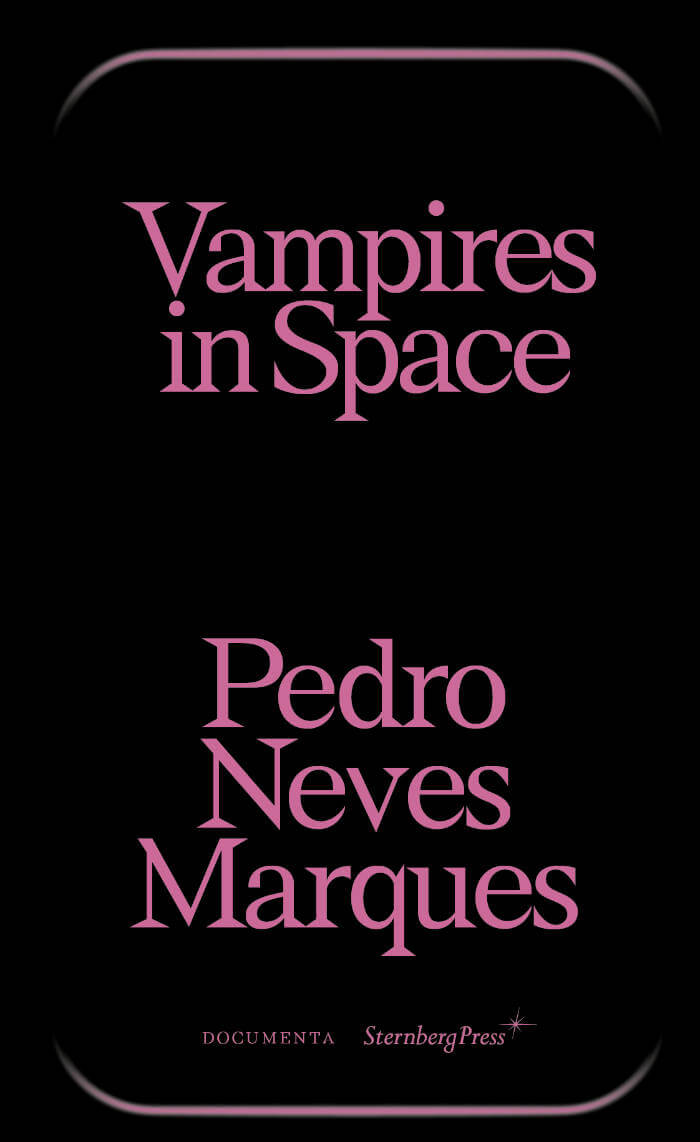
Vampires in Space
Exhibition catalogue of filmmaker, visual artist, and writer Pedro Neves Marques's solo project "Vampires in Space" at the Portuguese Pavilion, 59th International Art Exhibition – La Biennale di Venezia 2022.
"In space it's always night." A family of vampires travels through space, carrying life to a faraway planet. Alone, they recall their past, offering an open-ended narrative about the role of fiction in our lives, with a special care for transgender experiences.
This book includes an interview, film scripts and poetry by Neves Marques, curatorial texts by João Mourão, Luís Silva, alongside visual documentation and other contributions by Manuela Moscoso and Filipa Ramos.
The work of Pedro Neves Marques (born 1984 in Lisbon, Portugal) combines anthropological research, cinema, publishing, poetic and fictional writing. Their hybrid aesthetic, that blends science fiction and documentary realism is influenced by the history of feminist and queer sciences, and projects us into futures that question the control of our bodies, our desires and the world around us beyond the register of dystopia. In doing so, they explore how we might transform our imaginaries of gender, new technologies, ecology and postcolonial issues.

Rise and Fall of the Middlemen
A visual and poetic investigation of the enigmatic figure of the "Middleman", combining short punchlines and full-page illustrations, which are wryly reminiscent of Kafka's fictional world. The publication comes with a cardboard puppet, to be screwed and assembled.
Who is the Middleman? A viewer? An author who mediates between the world of ideas and the material world by creating drawings, sculptures, and texts? A simplified and symbolic puppet that can be moved by various forces?
In his latest book, artist Honza Zamojski makes an illustrative and poetic attempt to describe the Middlemen, their everyday life, and the realities that surround them. The book's short punchlines mark the rhythm of the Middelmen's life and their movements in the illustrations, which are wryly reminiscent of Kafka's fictional world.
Produced by the International Centre of Graphic Arts (MGLC) in Ljubljana and realized on the occasion of the exhibition Middleman in 2023, the publication comes with a Middleman cardboard puppet, literally the "hero taken from the book and put aside," a playful object to be screwed together, assembled, and dealt with, sometimes feeling a bit guilty.

Elika Hedayat
First monograph of the Franco-Iranian artist.
This monographic catalogue looks back over the first 15 years of work by Iranian artist Elika Hedayat through more than 110 reproductions. Two of these are on a 1:1 scale, and a detailed set offers a comparison of the dimensions of the works in relation to each other.
Françoise Docquiert introduces the issues at stake in her practice with an essay, complemented by an interview with Joana P.R. Neves.
"Elika is a Parisian-Iranian artist. This cultural blend is slightly ironic though very significant, as it nourishes her artistic work and practice. Inspired by her childhood, her life, and the violence in her native country, she makes films, videos, and drawings always filled with beauty, scathing humour and cruelty." - Annette Messager
Born 1979 in Tehran, Elika Hedayat lives and works between Paris and Tehran. Arriving in France in 2004, she was admitted to the École Nationale Supérieure des Beaux-Arts in Paris in Annette Messager's studio, from wich she graduated with the Jury's congratulations in 2008.
For her works, Elika Hedyat often uses testimonies and experimental documentaries stage in a dreamlike and imaginary universe. Her stories are contemporary and her characters are real. All of her works revisits historical references, transferring them to the field of personnal experience, mainly using the various possibilities of her repertoire as a narrative document and memory retrieval tool. Reality, memory and imagination come together in a personal story under different forms : drawing, video, documentary, painting and performance.
Text by Françoise Docquiert.
Interview with Elika Hedayat by Joana P. R. Neves.

Artists' Survival Kit
A collection of essays and a critical attempt to rethink and improve the relationship between artists and art institutions and to give visibility to the precarious, complex, and very often existential reality of the art workers.
"Beneath the glamorous surface of the art world—the openings and dinner parties, the record-breaking auction prices, the media attention—lies a reality that is precarious, complex, and very often existential: only a tiny minority of artists support themselves with their work and fewer still manage to do so throughout their lives. This book tells those other stories, for example of artistic practices grounded in performance, research, and political activism. These practices are not necessarily oriented toward producing marketable objects. Thousands of artists around the world, at all latitudes, struggle every day under precarious work conditions, in the absence of shared rules, and with a debilitating sense of insecurity caused not only by the threat of global pandemics but also by war and political oppression, resurgent nuclear threat, competition for dwindling resources, and perhaps most pressing of all, the climate crisis.The economic challenge of supporting oneself as an artist immediately turns into an ethical one." — Andrea Bellini

Silent Whale Letters – A Long-Distance Correspondence, on All Frequencies
Ella Finer, Vibeke Mascini and 1 more
An experiment in listening to frequencies beyond human sensorial range, Silent Whale Letters is a long-distance correspondence intimately attuned to the infravoice of a blue whale, a document held silent in the sound archive, and other so-called "silent" subjects.
As part of an ongoing collaboration between Ella Finer and Vibeke Mascini the letters consider how the silent document shifts the logic of the archive, figuring listening as a practice of preservation.
As the letters attune to the ocean loud with communications across time and space, the authors write about the movement of matter, of energies, wavelengths, currents and how the ocean preserves as it disperses what it carries. How does working with what we cannot see, or even hear within range, shift the parameters of attention? How does the energetic archival space of the ocean agitate and disrupt claims to knowledge, history, and power?
Moving through three years of call and response the book unfolds through "a joint meditation on the transformative potential of a note, a voice, carried from saltwater into the archive" (Rebecca Giggs).
They chart a process that is equally conceptual and intimate, theoretical and deeply personal, moving through discussions of (amniotic) undercurrents, call-and-response mechanisms, energetic wavelengths, oceanic and archival memory, mysterious scales, and the watery acoustic commons.
Edited by Kate Briggs.
Contributions by Kate Briggs and Emma McCormick Goodhart.
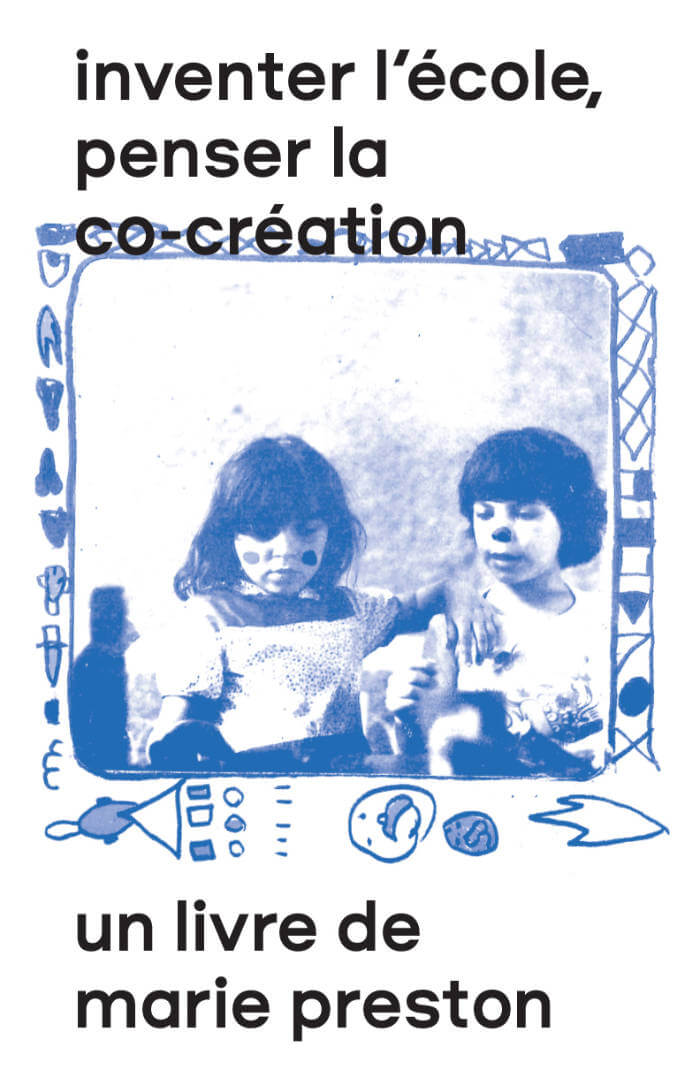
Inventer l'école, penser la co-création
A publication by artist and teacher-researcher Marie Preston on the alternative pedagogies developed in France during the 1970s-1990s in "open" schools working on the question of the relationship between co-creation and co-education.
The teaching teams at the heart of this book were convinced that, in order to break social reproduction, the school system was in dire need of transformation and they did it! The experiences discussed in this book constitute a truly fertile ground in terms of educational, relational and institutional inventions, and we have much to learn from them today. This is particularly true of cooperative and co-creative artistic practices which convey a true desire for and ways to implement social transformation, joint management, the emergence of collective creation and commons.
The work is built up around a back and forth between interviews and accounts from the participants of this story and contextual and analytical elements opening on co-creative artistic practices.
This book gathers an interview with Jean Foucambert, a discussion with Rolande and Raymond Millot (École Vitruve, Paris and La Villeneuve neighbourhood, Grenoble) and an unpublished text by André Virengue who was the headteacher of the Jacques-Prévert school in Villeneuve d'Ascq for over 20 years. A significant part of this work is dedicated to iconography, a crucial component of research as it enables the discovery of students' realisations as well as the publishing of school newspapers and other print works.

Sacred Spells: Collected Works
The collected life-work of an interdisciplinary writer, performer, and central figure in the Black Gay cultural arts and AIDS movements.
In this timely collection of poetry, plays, fiction, and performance texts, Assotto Saint draws upon music and incantation, his Haitian heritage, and a politics of liberation to weaves together a tapestry of literature that celebrates life in the face of death. Influential to contemporary writers such as Essex Hemphill, Marlon Riggs, and Melvin Dixon, Sacred Spells is Saint’s crucial legacy–five hundred incandescent pages of painful, lyric writing that exemplifies the visceral, spiritual dimensions of an artistic practice that’s integral to Black and LGBTQ activist movements worldwide, both historic and present.

Wanting Something Completely Different – 111 Vignettes of Left-Wing Figures, Themes, Films, and Writers
A collection (montage) of biographies and themes written by Jairus Banaji.
Wanting Something Completely Different discusses a range of political figures, themes, directors and writers in a series of brief, evocative descriptions ('vignettes') aimed at laying out a vision of a modern, cosmopolitan left that can think creatively about the world we live in. The political figures include both thinkers and activists from a wide range of backgrounds—from Frantz Fanon and the Palestinian novelist Ghassan Kanafani to the theologian Dietrich Bonhoeffer and the murdered Russian journalist Anna Politkovskaya. The themes range equally widely from the death of Walter Benjamin (reconstructed here from a remarkable documentary on the same theme) and the slaying of Pasolini to the work of British Marxist Perry Anderson, or the corrupt nature of India's leading corporate groups, or the outstanding contributions of Italian and U.S. Black feminists to feminist theory. And under the rubrics which discuss film and literature, there is the same striving for diversity and depth.
The vignettes collected in this Rab-Rab book first circulated on Facebook over some seven years or more and are reproduced here with a new introduction and extensive bibliographical references and notes.
Jairus Banaji is a historian and revolutionary Marxist activist. He received the Isaac and Tamara Deutscher Memorial Prize in 2011. His academic work has ranged widely across sources and languages, with major books on Late Antiquity and commercial capitalism as well as numerous papers and articles.

À perte de mère – Sur les routes atlantiques de l'esclavage
Saidiya Hartman traces the history of the Atlantic slave trade by recounting a journey she took along a slave route in Ghana. Following the trail of captives from the hinterland to the Atlantic coast, she reckons with the blank slate of her own genealogy and vividly dramatizes the effects of slavery on three centuries of African and African American history.
Saidiya Hartman, professor of English and comparative literature at Columbia University, is a scholar of African American literature and cultural history.
Preface by Maboula Soumahoro.
Translated from the English (American) by Maboula Soumahoro (original title: Lose Your Mother. A Journey Along The Atlantic Slave Route, Farrar, Straus and Giroux, 2007).
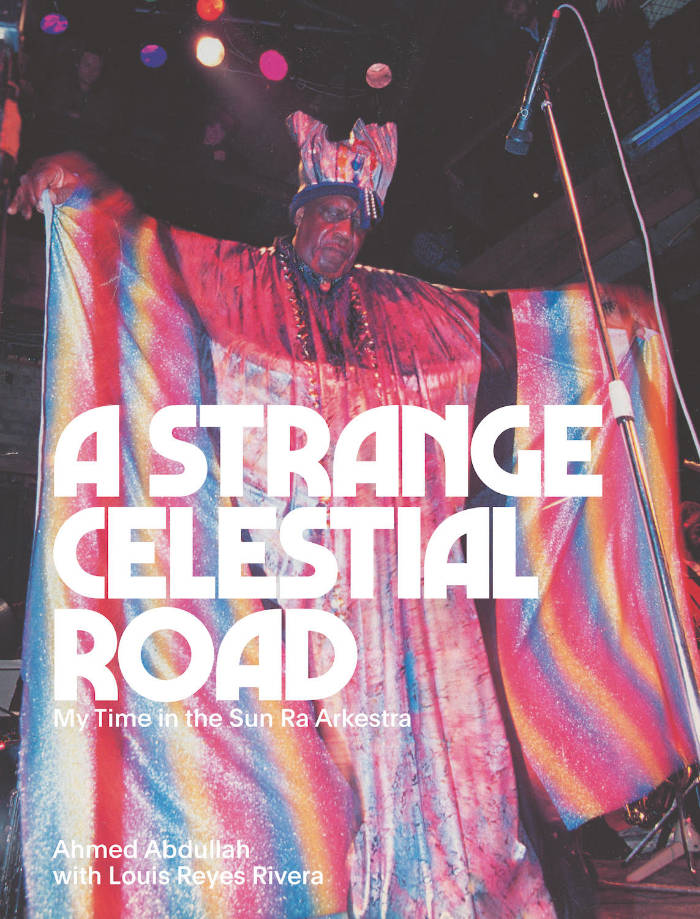
A Strange Celestial Road – My Time in the Sun Ra Arkestra
Louis Reyes Rivera, Ahmed Abdullah
In this memoir, Harlem-born trumpeter Ahmed Abdullah recounts decades of national and international touring with the Sun Ra Arkestra and charts the rise of New York loft jazz scene, offering a fascinating portrait of advanced music in Brooklyn and lower Manhattan from the 1970s through the 1990s.
In this captivating memoir, the first full-length account of life in the Arkestra by any of its members, Harlem-born trumpeter Ahmed Abdullah recounts two decades of traveling the spaceways with the inimitable composer, pianist, and big-band leader Sun Ra. Gigging everywhere from the legendary Bed-Stuy venue the East to the National Stadium in Lagos, Abdullah paints a vivid picture of the rise of loft jazz and the influence of Pan-Africanism on creative music, while capturing radical artistic and political developments across Brooklyn and Lower Manhattan in the 1970s and '80s. Richly illustrated with seventy-two pages of photographs and posters from Adger Cowans, Marilyn Nance, Val Wilmer, and others, A Strange Celestial Road interweaves the author's own moving story—his battles with addiction, spiritual development, and life as a working class performer—with enthralling tales of tutelage under Cal Massey, collaborations with the likes of Ed Blackwell, Marion Brown, and Andrew Cyrille, and profound, occasionally confounding, mentorship by Sun Ra. Originally written in the 1990s with the help of Nuyorican poet Louis Reyes Rivera and published now for the first time, with a foreword by Salim Washington, A Strange Celestial Road isnot only an autobiography, but a history of a remarkable and under-documented movement in music.
Ahmed Abdullah (Leroy Bland) joined the Sun Ra Arkestra as a trumpeter in 1974 and remained a member for more than twenty years. Born in Harlem in 1947, he became an important figure in the New York loft jazz movement, forming the group Abdullah in 1972, and going on to found the Melodic Art-Tet with Charles Brackeen, Ronnie Boykins, and Roger Blank in the early 1970s and The Group with Marion Brown, Billy Bang, Sirone, Fred Hopkins and Andrew Cyrille in 1986. Abdullah is a co-founder of the Central Brooklyn Jazz Consortium, has been the music director of Dianne McIntyre's Sounds in Motion Dance Company, and is music director at the historic venue Sistas' Place in Bedford-Stuyvesant, Brooklyn. He has been a music instructor at Carnegie Hall and Brooklyn Philharmonic Orchestra, and teaches at the New School for Social Research in Manhattan and an elementary school in central Brooklyn.
Louis Reyes Rivera (1945-2012) was a Puerto Rican poet from Brooklyn. Known as the "Dean of Nuyorican Poetics," he led creative writing workshops in community centers and prisons across New York, lectured on Latin and Black diasporic history and literature at New York colleges including Hunter, Boricua, Pratt, and Stony Brook; and was a leader in the 1969 student movement at CUNY, leading to the founding of its department of ethnic studies. Rivera was also a prolific editor, working on books such as John Oliver Killens's Great Black Russian: The Life and Times of Alexander Pushkin, and a translator of works by Puerto Rican poets Clemente Soto Velez and Otto Rene Castillo. His own poetry collections include Who Pays the Cost (1977), This One for You (1983), and Scattered Scripture (1996), which received an award from the Latin American Writers Institute.

Art Monsters: Unruly Bodies in Feminist Art
A dazzlingly original reassessment of women's stories, bodies and art - and how we think about them.
For decades, feminist artists have confronted the problem of how to tell the truth about their experiences as bodies. Queer bodies, sick bodies, racialised bodies, female bodies, what is their language, what are the materials we need to transcribe it?
Exploring the ways in which feminist artists have taken up this challenge, Art Monsters is a landmark intervention in how we think about art and the body, calling attention to a radical heritage of feminist work that not only reacts against patriarchy but redefines its own aesthetic aims.
Writing in the tradition of Susan Sontag, Hélène Cixous and Maggie Nelson, Lauren Elkin demonstrates her power as a cultural critic, weaving daring links between disparate artists and writers - from Julia Margaret Cameron's photography to Kara Walker's silhouettes, Vanessa Bell's portraits to Eva Hesse's rope sculptures, Carolee Schneemann's body art to Theresa Hak Kyung Cha's trilingual masterpiece DICTEE - and shows that their work offers a potent celebration of beauty and excess, sentiment and touch, the personal and the political.
'Destined to become a new classic' - Chris Kraus

Truth & Dare
The debut fiction collection from an inimitable critic, Truth & Dare is a deeply personal and fantastical ride through gender, trauma, queerness, science, history, and religion.
Cornish mermaids take to the football pitch to protest warming seas. Trans students in Manchester searching for the perfect dick accidentally warp the fabric of spacetime. England's worst pogrom comes for York's particle collider, powered by bread and gender energy. On Bournemouth beach, a storm delivers an ancestor across oceans of time to sire a drowning descendant. The devil stands a drink at London's famous gay pub, The Black Cap, while Artemis, in the guise of Joan of Arc, roams a life-or-death night in East Sussex.
Remember the Witchcraft Act of 1927, and the refugees that fled via cinema to defend the Republic of Catalunya? Of course not, it's been written out of history. This is England, (but not?) as we know it.
A queer quantum tour through what was, what is, what could have been and may yet still come to pass, in a collection that braids high-wire believe-it-or-not memoir with cutting-edge science fiction (or is it?) from alternate timelines that vibrate very close to ours. Truth or dare? Both, always.
So Mayer is a writer, indie bookseller, film curator, and pencil stan. Their most recent books are A Nazi Word for a Nazi Thing (Peninsula, 2020), a short essay on queer art, censorship and resistance, and <jacked a kaddish> (Litmus, 2018), a poetry sequence about interwar masculinity, technology and hats, and their BFI Film Classics on Orlando is forthcoming. Their work across genres and forms has been published internationally, including in Roxane Gay's anthology Not that Bad: Dispatches from Rape Culture, in several Criterion DVDs, and in Ignota Press's Spells: 21st Century Occult Poetry. Plus their poetry once appeared on hoardings in Dublin. With Adam Zmith, they collaborated on Unreal Sex for Cipher, an anthology of queer SFFH, and on the BBC Sounds podcast The Film We Can't See, a tour through queer film history.

ROT ISSUE ONE 2023: IMMUNITY
ROT is the catalogue for a community of practices.
ROT is a medicine and a ritual. The prescription for a new therapy.
ROT is a manual without instructions. A map. A party.
ROT touches upon sci-fi doomed scenarios.
ROT works within the ruins of the future.
ROT engages in weird beautification processes.
ROT uses mushrooming as a research method.
ROT hosts essays, stories, poetry, interviews, visuals, recipes, horoscopes and more.
ROT is mouldy.
ROT is glossy and asks to be touched.
With contributions by Adrijana Gvozdenović, Agnese Krivade, Alix Eynaudi, Anne Juren, Asli Hatipoglu, Carolina Mendonça, Cécile Tonizzo, Coline Gautier, Daniele Gasparinetti, Deborah Robbiano, Eleanor Ivory Weber, Elke Van Campenhout, Ēriks Ašmanis, Eve Gabriel Chabanon, Gary Farrelly, Goda Palekaitė, Günbike Erdemir, Jaime Llopis, Jennifer Russo, Jeroen Peeters, Jonas Palekas, Kristin Wiking, Lucia Palladino, Luciano Maggiore, Marko Gutić Mižimakov, Michelle Anay Woods, Muna Mussie, Muslin Brothers, Natasha Papadopoulou, Nina Janela, Norberto Llopis, Paloma Bouhana, Peggy Pierrot, Sandra Muteteri Heremans, Santiago Ribelles Zorita, Sara Manente, Sébastien Tripod, Sina Seifee, Sofie Durnez, Wilson Le Personnic
Sara Manente is a multidisciplinary artist and researcher who promotes collaborative situations in heterogeneous formats. Drawing on the imagery and matter of living cultures and mycelium brought into relation with live arts, her recent projects reflect on the possibility of contamination between pedagogy, research, performance and publication.
Published by Varamo Press
First edition, August 2023
136 pages, 22 x 30 cm, perfect binding
ISBN 978-82-693189-2-0
Graphic design by Deborah Robbiano

Corey Fah Does Social Mobility
The radical, joyful follow-up to the Goldsmiths Prize-winning Sterling Karat Gold.
This is the story of Corey Fah, a writer on the cusp of a windfall, courtesy of the Social Evils prize committee, for whom the actual gong - and with it the prize money - remains tantalizingly out of reach.
Neon beige, with UFO-like qualities, the elusive trophy leads Corey, with partner Drew and surprise eight-legged companion Bambi Pavok, on a spectacular detour through their childhood in the Forest - via an unlikely stint on reality TV. Navigating those twin horrors, through wormholes and time loops, Corey learns - the hard way - the difference between a prize and a gift.
Both radiant and revolutionary, Isabel Waidner's fiction gleefully takes a hammer to false binaries, boundaries and borders, turning walls into bridges and words into wings. Fierce, fluid and funny, they free us to imagine another way of being.
This is a novel about coming into one's own, the labour of love, the tendency of history to repeat itself and the pitfalls of social mobility. It's about watching TV with your lover.

The Complete Fear of Kathy Acker
Published in excerpts over almost four decades, Jack Skelley’s “secretly legendary” novel is at once an homage to the thrillingly inventive spirit of Kathy Acker’s cut-up novels and a definitive history of LA’s underground culture of the mid-1980s.
Composed in bursts, Fear of Kathy Acker depicts Los Angeles through the eyes of a self-mocking narrator. Shifting styles and personae as he moves between Venice and Torrance, punk clubs and shopping malls, Disneyland and Dodger Stadium, Jack Skelley pushes the limits of language and identity while pursuing–like Kathy Acker–a quixotic literary mix of discipline and anarchy. In this adrenalized, cosmic and comic chronicle of Los Angeles, Skelley's “real life” friends make cameo appearances alongside pop archetypes from Madonna to Billy Idol.
This first-ever complete edition of the book includes new essays, playlists, and a map of the 1980s Los Angeles in which its manic protagonist lives and loves.
Afterword by Sabrina Tarasoff.

Let’s Become Fungal! Mycelium Teachings and the Arts
There is a growing interest in fungi and mycelium as a material, the ever-branching connecting threads of the fungal world. The entanglements and how this rhizomatic network functions is not just a fascinating ecological system and material, but carries a profound usefulness as a metaphor for our potential new systems, ways of thinking and behaviors.
Let’s Become Fungal! takes its inspiration from the world of art and mycology and shares innovative practices from Latin America and the Caribbean that are rooted in multispecies collaboration, symbiosis, alliances, non-monetary resource exchange, decentralization, bottom-up methods and mutual dependency—all in line with the behavior of the mycelium.
Every chapter is phrased as a question. They do not lead to answers, but to twelve teachings addressing for instance collaboration, decoloniality, non-linearity, toxicity, mobilization, biomimicry, death, and being non-binary. Simultaneously it ventures deeper into the world of fungi. The teachings from the fungus may inspire artists, collectives, organizations, educators, policy-makers, designers, scientists, anthropologists, change-makers, curators, urbanists, activists, gardeners, community-leaders, farmers, and many others, to become more fungal in their ways of working and being.
Inspired by conversations with: Francisca Álvarez Sánchez, Carolina Caycedo, Annalee Davis, Maya Errázuriz, Juan Ferrer, Lilian Fraiji, Giuliana Furci, Sofía Gallisá Muriente, Yina Jiménez Suriel, Patricia Kaishian, Mirla Klijn and Olaf Boswijk, Lola Malavasi and Daniela Morales Lisac, Martina Manterola and Carmen Serra, Camila Marambio, Mariana Martínez Balvanera, Claudia Martínez Garay, Lina Meija and Luciana Fleischman, Tomaz Morgado Françozo and Marília Carneiro Brandão, Marion Neumann, Maria Alice Neves, Tara Rodríguez Besosa, Raquel Rosenberg, Juli Simon, Ela Spalding, Gianine Tabja, Gabriela Flores del Pozo and Lucia Monge, Fer Walüng, Tatyana Zambrano.

Productive Archiving
Productive Archiving discusses a variety of problems of archival organizations. It mainly focuses on the following three issues that are usually overlooked: first, the question of inclusion in or exclusion from the archive; second, the loss of individuality in the archive, the danger of homogenization; and third, that archiving may become a form of pigeonholing, boxing specific identities into a confined space.
Avoiding the archive because of these problems is not an option, because archival organization is a basic symbolic mode on the basis of which we organize our lives, the past, the present and the future. What this book suggests is that it is best to explore constructive and creative solutions for these problems. Especially artistic archives seem to be able to develop these possible solutions, because they offer speculative, unexpected ways to order, select, and narrate specific information, and bring about new connections and archival organizations.
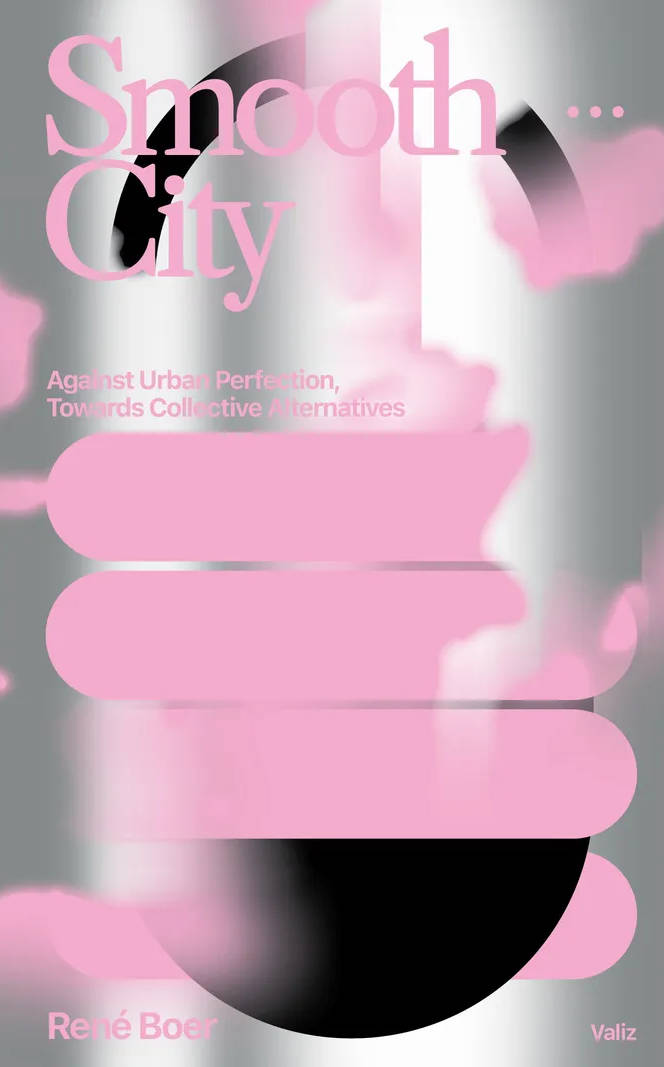
Smooth City
In the foreword of Smooth City, René Boer writes about changes shaping the city center of Amsterdam nowadays: how the streets once known for their roughness, are now characterized by homogenous aesthetics, minimalist shopping windows and shiny Uber taxis. These are typical characteristics of the ‘smooth city’: a city in which the urge for ‘perfection’, efficiency and control is constantly increasing. It is a kind of city which is sterile, clean and layered with new technologies, which makes urban life seemingly ‘perfect’ and frictionless. It can be questioned, however, whether there is still place for divergence from norms, forms of friction or any alternative in the smooth city?
René Boer argues in Smooth City that this new version of urbanity undermines the democratic nature and the emancipatory potential of cities, and hardly leaves any space for experiment, non-normativity and transgression. Although the book states that the desire for a safe, clean and well-functioning urban environment is understandable, it also provides a framework to challenge this obsession with perfection and to instead collectively work towards porosity in the urban realm. Smooth City offers a critical analysis of the origins, characteristics and consequences of the smooth city and brings some very welcome reflections on the urban reality we are currently living in. The book also contains a series of ‘smoothscapes’, collages made by visual artist and graphic designer Kees de Klein, reflecting on this smooth urban reality.

Sensing Earth: Cultural Quests Across a Heated Globe
Philipp Dietachmair, Pascal Gielen and 1 more
Sensing Earth states that our environmental issues are in the first place a matter of culture and aesthetics. Technology and science are not enough to solve these problems.
Our globe is facing an escalation of ecological problems, with no quick solutions in sight. We seem to be caught in a spiral of health issues, burnout, sensory overload, depression, and somatic deprivation. Artists faced with these crises are looking for ways to articulate the ongoing emergencies and explore possible ways out. However, the arts and culture are caught in a double bind. Artists and cultural initiatives need circulation to let ideas intersect and create meaningful connections. However, this globalized system also contributes to the planet’s ecological decline: by countless journeys from one biennale, international residency, touring exhibition and networking event to the next. After the Covid-19 pandemic ‘business as usual’ seems to prevail.
Sensing Earth includes essays, interviews, poetry, manifestos, choreographic prompts, speculative fiction, and case studies operating at the intersection of art and activism, culture and nature. All texts explore what sensorial foundations are necessary to address systemic failures, and what routes to take for keeping us moving on this planet, physically, emotionally and intellectually.
Contributors: Grégory Castéra, Center for Arts, Design and Social Research (Dalída Maria Benfield, Christopher Bratton, Luigi Coppola, Pelin Tan), Philipp Dietachmair, Futurefarmers, Pascal Gielen, Marina Guzzo, INLAND (Fernando García-Dory), Meander, Georgia Nicolau, Luciane Ramos Silva, Noel B. Salazar, Joy Mariama Smith, Naine Terena de Jesus, Dea Vidović, André Wilkens, Ana Žuvela